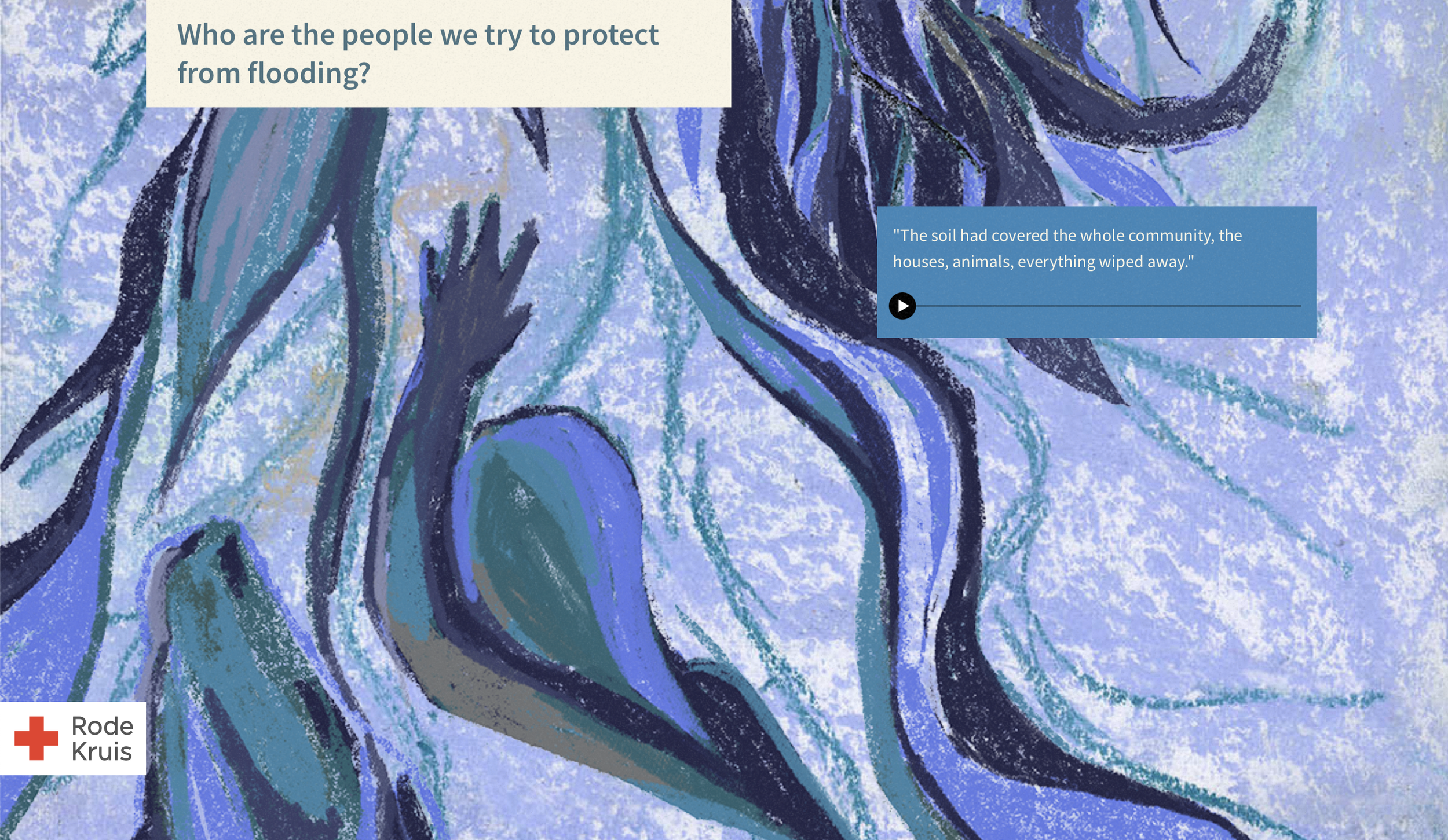Anticipatory Action
In collaboration with the Red Cross Netherland, Sabrina Gerhlein (PMEAL Advisor RK) and Yannick Gregoire (frontend developer) I have created an audio-visual storyline that evaluates the Anticipatory Action Protocol: a protocol developed with local partners to anticipate the impact of natural hazards on communities in Uganda, Kenya and Zambia.
We present a personal reflection given by the key stakeholders involved on how they experienced the process of the EAP development. The stakeholders have reflected on specific memories, moments or situations throughout the process of jointly developing the EAP.
Visit the Climate Centre website to listen and look at the full story.
Disasters and development are inherently linked. Disasters can wipe out decades of hard-fought poverty reduction and development gains of communities. Climate change is aggravating this. In addition, disasters disproportionally affect the poor: low levels of development make the population more exposed and vulnerable to disasters.
Many predictable extreme weather events such as floods and drought result in disasters and suffering by vulnerable communities. The Uganda Red Cross National Society (URCS), together with key stakeholders has been working on reducing or even avoiding these impacts through the Innovative Approaches to Response Preparedness (IARP) project. Weather forecasts are used to inform communities in time about early actions that can be taken by themselves and by relevant organizations before an upcoming hazard reaches them. This reduces risks for vulnerable communities and saves money and time for humanitarian response. URCS, the Office of the Prime Minister (OPM), the Directorate of Water Resource Management (DWRM), Humanitarian Open Street Map Team, Red Cross Red Crescent Climate Centre and Red Cross Data & Digital team 510 have co-developed an Early Action Protocol (EAP) to help communities fight the impact of climate change and anticipate disasters.






